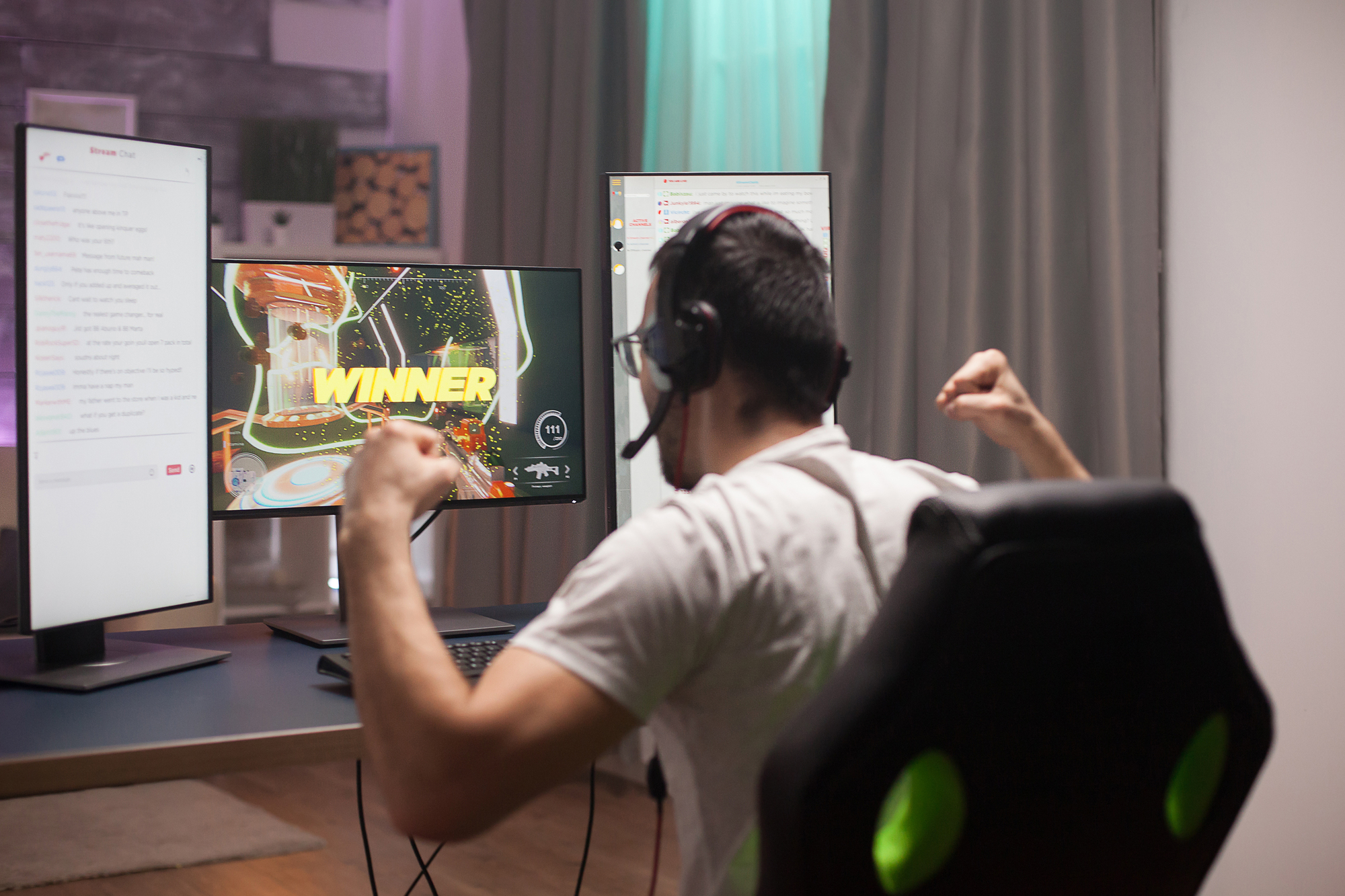

Virtual reality has transformed gaming, creating unprecedented immersive experiences. Players now step into virtual worlds, interacting with environments and objects as if they were physically present. VR gaming combines high-end technology with advanced graphics to produce lifelike 3D environments that respond to user movements and inputs.
This technology opens up new possibilities for game design and player engagement. VR headsets and motion tracking systems allow gamers to look and move around virtual spaces naturally. The physical element introduced by VR adds complexity to gameplay, making body movements and reactions as important as strategic thinking and reflexes.
VR gaming is expanding rapidly, with projections suggesting virtual gaming content revenue will reach $7 billion by 2025. The technology is also making inroads into competitive gaming and eSports, offering innovative ways for players to compete and spectators to watch. As VR hardware and software continue to advance, the boundaries between virtual and physical gaming experiences are likely to blur further.
Evolution of Virtual Reality in Gaming
Virtual reality technology in gaming has undergone significant advancements since its inception. The progression from early experiments to modern consumer-grade headsets has transformed the gaming landscape.
Historical Milestones and Key Innovations
The concept of virtual reality in gaming dates back to the 1960s. In 1968, Ivan Sutherland created the first head-mounted display system, laying the groundwork for future VR developments.
The 1990s saw a surge in VR interest. Sega announced the Sega VR headset for arcade games and the Mega Drive console in 1993, though it never reached the market.
Nintendo released the Virtual Boy in 1995, which, despite its commercial failure, represented an important step in consumer VR gaming.
The Rise of Consumer VR Headsets
The modern era of VR gaming began in 2012 when Oculus launched a Kickstarter campaign for its Rift headset. This sparked renewed interest in VR technology across the gaming industry.
In 2016, several major VR headsets hit the market. The Oculus Rift, HTC Vive, and PlayStation VR brought high-quality VR experiences to consumers.
Standalone VR headsets like the Oculus Quest, released in 2019, eliminated the need for external sensors or connections to PCs. This made VR gaming more accessible and convenient for a wider audience.
Recent innovations focus on improving resolution, field of view, and reducing motion sickness. Haptic feedback and eye-tracking technologies are enhancing immersion in VR games.
The VR Gaming Experience
Virtual reality gaming offers players unprecedented levels of immersion and interactivity. VR technology transports users into digital worlds, engaging their senses and creating lifelike experiences.
Creating Immersive Environments
VR headsets display high-resolution 3D graphics that surround players, creating a sense of presence in virtual worlds. Game designers craft detailed environments with realistic textures, lighting, and scale. Players can look in any direction and move naturally within these spaces.
VR games often feature fantastical settings impossible in real life. Players might explore alien planets, float through space, or inhabit the body of a different creature. The ability to fully inhabit these worlds leads to deeper engagement.
Haptic feedback in controllers and bodysuits adds tactile sensations, further enhancing immersion. Players can feel impacts, textures, and environmental effects.
Advancements in Interactivity
VR gaming enables natural, intuitive interactions with virtual objects and environments. Motion controllers track hand and arm movements, allowing players to reach out and manipulate items directly. Some systems incorporate full-body tracking for even greater physical involvement.
Gesture recognition and voice commands provide additional ways to interact. Players can cast spells with hand motions or issue verbal orders to AI companions.
VR games often incorporate physics simulations, letting objects and characters behave realistically. This creates opportunities for emergent gameplay as players experiment with the world.
The Role of Audio in VR
3D spatial audio is critical for creating believable VR environments. Sounds appear to come from specific locations, helping players orient themselves and locate objects or enemies. The audio shifts naturally as players move their heads, reinforcing the sense of presence.
Ambient sounds like wind, water, or wildlife bring virtual worlds to life. Directional audio cues guide players’ attention and provide important gameplay information.
Voice chat takes on new dimensions in VR multiplayer games. Players can gauge the position of teammates through their voices, mimicking real-world communication.
Design and Development Challenges
Creating virtual reality games presents distinct obstacles for developers. Technical limitations and user experience concerns shape the development process.
Balancing Realism and Accessibility
VR game developers face the challenge of creating realistic environments while maintaining performance. High-fidelity graphics and physics simulations can strain hardware capabilities, leading to laggy experiences or reduced frame rates. This impacts immersion and can cause discomfort for players.
To address these issues, developers often use optimization techniques like level-of-detail rendering and occlusion culling. These methods help balance visual quality with smooth performance. Some games employ stylized art directions to reduce graphical demands while still delivering engaging experiences.
Another consideration is the range of VR hardware available. Developers must decide whether to target high-end systems or create more accessible games for widely available headsets. This choice impacts game design and potential market reach.
Ensuring Player Comfort and Safety
Motion sickness remains a significant concern in VR gaming. Developers must carefully design movement systems and camera controls to minimize discomfort. Popular solutions include teleportation mechanics and snap turning, which reduce vestibular mismatch.
Physical safety is another key factor. VR games need to account for players’ real-world environments to prevent accidents. Many titles incorporate guardian systems or passthrough cameras to alert users of potential obstacles.
Extended VR sessions can cause eye strain and fatigue. Developers should consider incorporating rest breaks or designing gameplay that encourages periodic pauses. Some games include comfort settings that allow players to adjust parameters like field of view or movement speed.
The Future of Virtual Reality in Gaming
Virtual reality gaming is poised for significant advancements in technology and user experiences. The integration of artificial intelligence and mixed reality will reshape how players interact with virtual worlds.
Trends Shaping the VR Landscape
Haptic feedback technology is set to enhance immersion in VR gaming. Wearable devices like gloves and suits will simulate touch sensations, allowing players to feel virtual textures and in-game impacts. This advancement will add a new layer of realism to VR experiences.
Social VR platforms are gaining traction, enabling players to connect and interact in shared virtual spaces. These platforms facilitate multiplayer gaming experiences and foster social interactions within immersive environments.
The VR gaming market is projected to grow substantially in the coming years. Increased investment from major tech companies and rising consumer adoption rates are driving this expansion. As hardware becomes more affordable and accessible, VR gaming is expected to reach a wider audience.
The Impact of AR and MR on Gaming
Augmented reality (AR) and mixed reality (MR) technologies are blending with VR to create hybrid gaming experiences. These technologies overlay digital elements onto the real world, allowing for innovative gameplay mechanics that merge physical and virtual environments.
AR and MR are finding applications beyond entertainment. Educational institutions are using these technologies for immersive learning experiences, while businesses are exploring their potential for training simulations and virtual meetings.
The integration of AR and MR in esports is opening up new possibilities for competitive gaming. Spectators can enjoy enhanced viewing experiences with real-time data overlays and interactive elements during tournaments.










